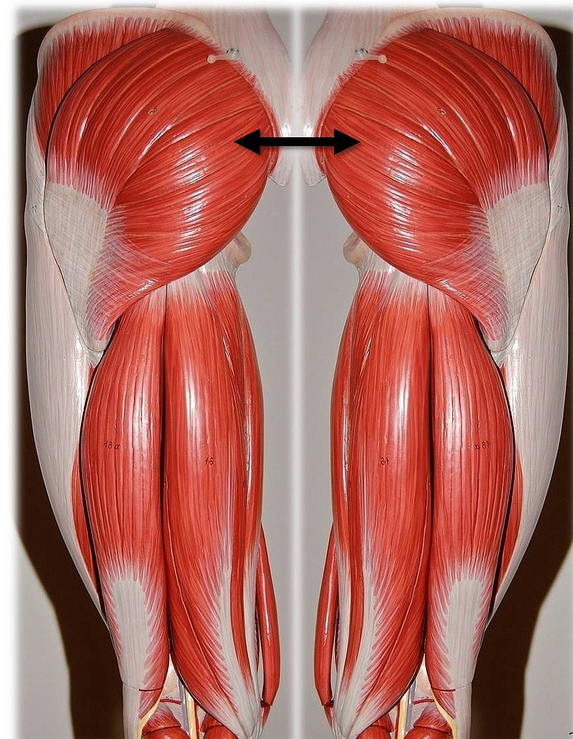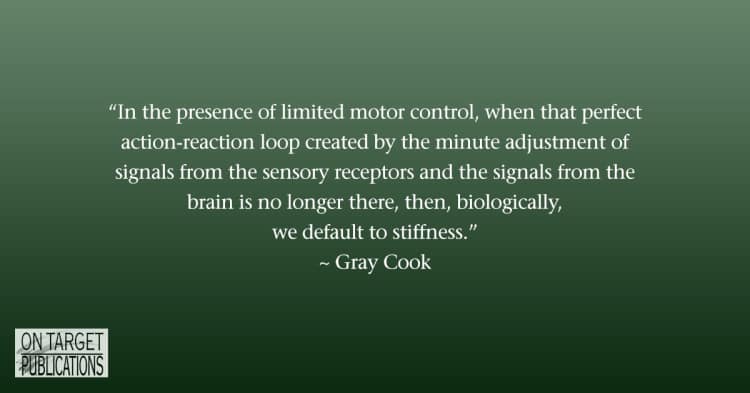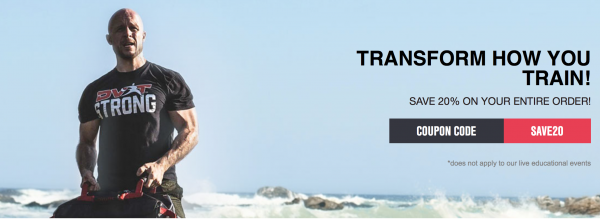How To Build Strong Glutes & Hip Mobility
2020-10-28
I was very close to never going into fitness. In college I was interning for Strength & Conditioning and went to school with the thought that I was going to become a university or professional sports strength coach. Hearing about the challenges that a good friend of mine had with the instability of the job, long hours, and often not so great pay I made the obvious choice to go into fitness (extreme sarcasm here). During my time with different sports teams there was one consistent concept almost no matter the sport, we need to build strong and mobile hips. That is actually shocking to a lot of people because they imagine that great athletes need a huge upper body. Sure, a strong upper body is nice, but every coach knows it is about the hips.
Of course glutes are all the rage in training, but it is really the hips as a whole complex we are going about. The posterior chain of the body (the glutes, hamstrings, calves, and even low back) make up our body’s power center and if the hips aren’t mobile and strong, then we can’t be powerful. The glutes often get all the glory, but that is a big part of why even though we do exercises for the glutes we don’t seem to build the strength, power, and mobility that really want to achieve.
How in the world does THAT happen if we are targeting the glutes? Where people misinterpreted concepts like “gluteal amnesia” wasn’t that the glutes were necessarily weak, but they often fired at the wrong time. I mean, if you glutes didn’t work at all you wouldn’t be able to walk or stand;) As renown spine expert, Dr. Stuart McGill explains, “For example, gluteal muscle activation retraining based primarily on the original work of Professor Janda has been honed in our own lab. This cannot be accomplished with traditional squat training (McGill, 2007). Chronic back pain tends to cause hip extension using the hamstrings and subsequent back extension using the spine extensors creating unnecessary crushing loads. Gluteal muscle re-integration helps to unload the back. Another critical concept for this stage of exercise design is that technique “details” are important.”
You see, what Dr. McGill is pointing to, is movement patterns and correct integration of the glutes, not necessarily the glutes themselves just have to become stronger. That is why in DVRT we focus on patterns, not individual muscles. You can get the glutes super strong in an isolated exercise, but this doesn’t mean they will learn to work at the right time and help our posterior chain. So, when we start with exercises like hip bridges, it isn’t just about the glutes, it is about how the glutes work with the rest of the chain.
If I am being honest, this was a big “ah-ha” moment for myself. When I learned that the glutes are connected to the core and lats that blew my mind! It also made a lot of sense when I thought about locomotion and why our opposite arm and leg swing together. It also changed me because I never coached the deadlift by “lifting the weight up”, I wanted to push the floor away from me. As someone with a degenerative spinal disease, this is the ONLY way I can deadlift, but I wondered why didn’t I use that in the hip bridge?
Once you grasp this concept it makes sense why we try to “break the bar” on a barbell deadlift or “break the handle” on a kettlebell for a swing. It also makes you realize as that most people train the glutes wrong! Not in just how they load the body, but how they progress the movement. Our glutes are fan shaped because they are meant to work in all 3 planes of motion.


There are two really important points physical therapist, Jessica Bento, shows in regards to progressing our hip bridges and building stronger glutes. For one, people always as us if they can use different equipment to load the body in the bridge. If you could we would tell you! Jessica shows that a medicine ball doesn’t work because we push in, not break apart. A band you can pull apart, but has no load. So, we are big about using the right tool for the right job and when it comes to loading the hip bridge in this manner the Ultimate Sandbag does give us unique advantages.
The second important point is how we start adding knee flexion/extension. The problem with leg curl machines is the same issue with trying to isolate the glutes. When you lay on your stomach and just flex your knee, you don’t have hip extension with it, no core engagement, and no feet. Sure, we can build the hamstrings but this points to where we don’t make people better because we aren’t training them with the chain that makes them help us move with such fluidity and strength.
What coach Robin Paget shows is a great combination of these principles for better strength and mobility. The Ultimate Sandbag in the shinbox position helps us load our core which builds proximal stability so that our hips can move more efficiently. Yes, mobility is typically restricted by neurological programming that identifies that something in our body doesn’t feel stable, in order to compensate, our body creates tightness as this great quote by renown physical therapist, Gray Cook explains.

Robin also shows many patterns in which we can move where we produce force and resist force at the same time. This is not only great for stronger glutes, but it re-teaches the patterns that helps us also gain better mobility in our hips. These types of concepts are just great strategies for strength and mobility, but we use more muscles, burn more calories, and yes, build better glutes. Doesn’t that sound like a perfect reason to understand functional training better?
The workout that DVRT UK master, Greg Perlaki continues showing how we use these concepts in many different ways. Sprinter Stance kettlebell swings introduce slight instability so that we have to resist rotation and frontal plane forces as we produce power in the sagittal plane. The suspended rows also integrate full hip extension and tie in the core and lat connection even in a dominant upper body lift. We WANT to use our whole body whether training the upper or lower body because that is what our body is designed to do! Half kneeling Ultimate Sandbag presses allow stability, mobility, and strength all at once. Being half kneeling forces us to create force into the ground and create stability through the hips. The instability of the Ultimate Sandbag forces us to have the whole body integrated because if we have a flaw the weight’s instability will show us! Transitioning from half kneeling side to side requires stability, mobility, and strength all at once because we are unstable as we do so and need to create stability through the feet, and use the hips along with the core to prevent falling over. Finally, rotation is one of the big things that the glutes love and are made to do, but it also requires mobility of the hips.
Watching Greg, you should watch how the feet and hips create the movement and the arms just direct the Ultimate Sandbag. Training strength, stability, and mobility of the hips and core at once helps us know that we are building hip strength, power, and mobility that will make us better in life and in sport. You start to see how people love to say they focus on the hips and glutes, but really they aren’t training the body in the way it is designed for movement. Most importantly, these drills can be taught to anyone and we have ways to progress and regress each movement. If you want to see, check out the progressions Greg gives us in teaching proper rotational training goin from most to least difficult.
Now 25 years after school I love being a teacher of functional fitness. When we don’t understand the body, how do we make it better? It isn’t only about our glutes burning or feeling pain when we do a mobility drill (which we really don’t want), but understanding the goal of our body in creating better movement! You can find out more in our DVRT Online Education HERE along with our DVRT workouts and Ultimate Sandbags that are ALL 20% off with code “save20” because we believe education is power!!!
© 2026 Ultimate Sandbag Training. Site by Jennifer Web Design.







